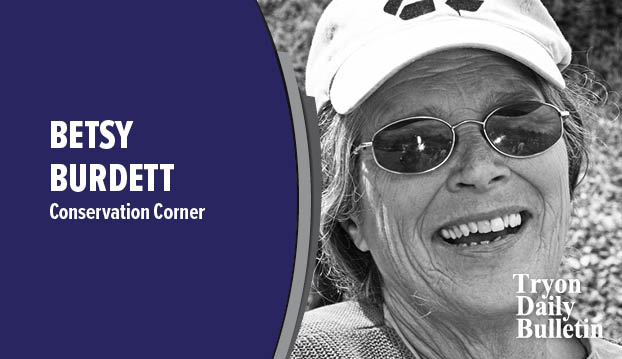“Why?”
Published 11:18 am Friday, September 6, 2024
|
Getting your Trinity Audio player ready...
|
Yesterday, I was walking in Holbert Cove on a trail along the edge of the Gamelands. The trail is an old roadbed where Old Holbert Cove Rd. was before the current Holbert Cove Rd. was created in the 1950s. Because the trail is an old roadbed, the ground is hard and mostly flat, making walking easier and allowing for less vegetation growth because of the hard earth. The walk is beautiful, with mature hardwood trees on both sides of the trail.
Since late summer is copperhead snake season, I was grateful for the sparse vegetation on the trail. Then, I noticed that the wild grasses were getting taller and thicker. I wondered why. So I looked around and everything around the trail looked nearly the same, and the trail was still level. Then I saw it— a stream cutting across the trail about ten feet ahead. That vegetation around me simply had the advantage of being within 20 feet of moving water, surrounded by trees with long roots to suck up the moisture from the stream and add it to the soil around the trees. The stream water did not actually feed the grasses and wild plants on the trail, but it created a nurturing environment for growth.
Now, let’s start thinking. How much do we see happening in nature yet do not even try to learn why those things happen? Why do some trees drop their leaves in the fall before other trees lose theirs? And why did the hurricane/twister-type storm of three years ago uproot only the oak trees? And why does ginseng thrive in shady north-east slopes but not on shady southwestern-facing slopes? And why are nearly all our massive landslides on healthy, fertile, wooded south-facing slopes? I have found answers to some of these questions, but there are hundreds more for which I am still seeking answers. Add to this the fact that there are many more “whys” out there.
The answer to why the vegetation on the trail grew higher and healthier in one place than in another is rather basic—it is able to grow because it is in a nurturing environment. Plants are not all the same or have the same needs. Some like acidic soil, and some like basic soil. Some like shade, and some need full sun. Some like it hot, some not.
On the trail, I saw several species of mushrooms, some growing on the ground, some on dead trees, and some on live trees. The mushrooms that live on dead trees help that tree decompose and become a part of the soil, providing life for future trees. Some of the mushrooms grow on the ground, like the chanterelles growing now. They will die and decompose, making the ground more fertile than before.
Asking the question “why” is not just about trees, mushrooms, or plants. It’s about all of our natural world, of which we are a part. Human beings can only thrive in a nurturing environment. People depend on others not just for survival but also for quality of life. When we see people who are not thriving or happy, maybe we should ask, “Why?”
Maybe, if we keep thinking and wondering how to help those people thrive – give them fertile soils to grow—we will create a healthier community.
Just as the fern cannot tell us why it is wilted, likely, our neighbor cannot tell us why he is so depressed. To make our world better, we must seek answers. And that starts with asking ourselves one simple but profound question: “Why?”



